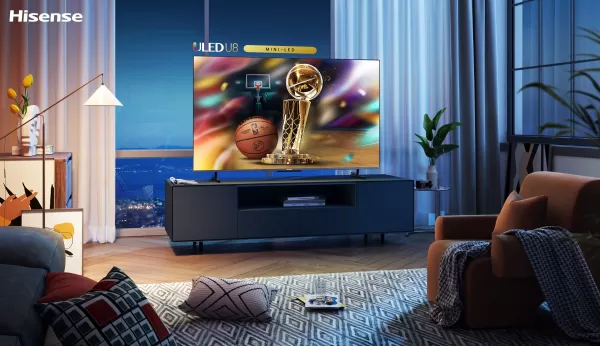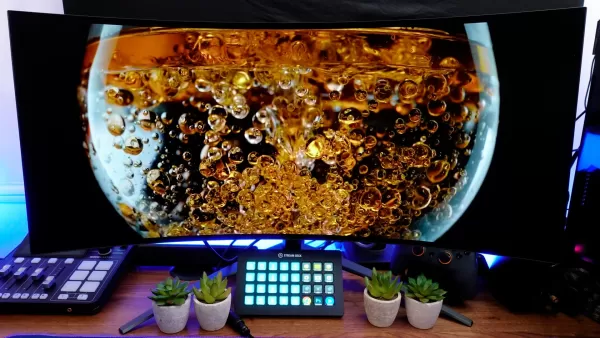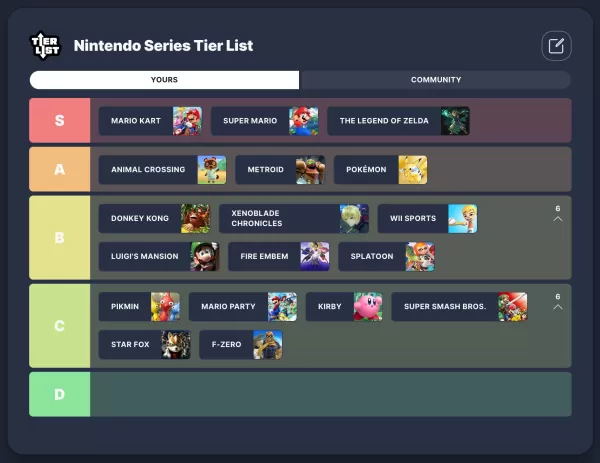by Max Jul 01,2025
Here is the SEO-optimized and content-enhanced version of your article, written with a natural flow and optimized for Google search visibility while preserving all original formatting and structure:
I still remember the day I bought my first OLED TV — the LG E8 55-inch in early 2019, just before the world shifted into lockdown. Looking back, it turned out to be the ideal companion for those long months indoors. At the time, I didn’t fully grasp what OLED (organic light-emitting diode) technology really meant beyond knowing that each pixel emits its own light, delivering infinite contrast without the need for a backlight. But after diving into the cinematic beauty of *Final Fantasy XV* and the emotional intensity of *The Last of Us Part II*, I truly understood what sets OLED apart. It’s like reliving vivid memories through a screen — sharp, immersive, and emotionally resonant. Naturally, this experience didn’t stop at just one OLED.
Fast forward a few years, and I upgraded to the LG C2 65-inch OLED TV. Since then, I’ve reviewed countless devices with OLED displays and come to realize something important: not all OLEDs are created equal. In fact, there are several types of OLED technology, but only three matter most for consumers today: WOLED, QD-OLED, and AMOLED.

OLED technology has been around for decades, with companies like Kodak and Mitsubishi experimenting with early versions. However, it wasn’t until LG introduced its line of OLED TVs in the early 2010s that the tech gained mainstream traction.
LG’s implementation is known as WOLED (White OLED). While the term isn't used in consumer marketing, it's crucial to understanding how LG's OLED panels function. Traditional RGB OLEDs use red, green, and blue subpixels that degrade at different rates over time, increasing the risk of burn-in. To address this, WOLED uses a white OLED base layer combined with an RGBW color filter. This approach balances longevity and color consistency, though it introduces some brightness limitations due to filtering inefficiencies. Higher-end WOLED models often incorporate Micro Lens Array technology to improve light output by focusing emitted light more efficiently within each pixel.
In 2022, a new alternative emerged: QD-OLED (Quantum Dot OLED), pioneered by Samsung. Unlike WOLED, which uses a white OLED layer, QD-OLED employs a blue OLED base that shines through quantum dot layers to produce red and green colors. Because quantum dots absorb and convert light rather than filter it, QD-OLED achieves richer color accuracy and higher peak brightness across the spectrum. This makes it a compelling option for HDR content and high-fidelity visuals.
AMOLED, meanwhile, sits in its own niche. Essentially a variant of traditional OLED, AMOLED incorporates a thin-film transistor (TFT) layer to allow faster pixel switching and better power efficiency. While this design enables excellent responsiveness for mobile devices and monitors, it slightly reduces the "infinite" contrast typically associated with OLED panels.

Choosing the best OLED type for gaming depends on your setup and personal preferences. In short, QD-OLED offers superior brightness and color vibrancy, making it ideal for dark-room environments and HDR-heavy games. That said, WOLED remains a strong contender, especially in rooms with ambient light or glare, where its polarized surface helps maintain deep blacks even under reflective conditions.
AMOLED panels are most commonly found in smartphones and laptops, where flexibility and energy efficiency are key. While they deliver great performance for handheld and portable gaming, their lower peak brightness can make them less effective in bright daylight scenarios. For dedicated gaming setups — whether on a monitor or large-screen TV — you’ll generally choose between WOLED and QD-OLED.
While WOLED excels in maintaining black levels under ambient lighting, QD-OLED delivers higher overall brightness and deeper color saturation. However, Samsung’s QD-OLED panels omit the traditional polarizing film to boost brightness, which can lead to visible reflections and a purplish tint in certain lighting conditions. Therefore, if your room has significant window glare or overhead lighting, WOLED may offer a more consistent visual experience.
Ultimately, both technologies have strengths and trade-offs. High-end models from either category will offer excellent performance, but the final decision should reflect your environment, budget, and visual preferences.
Beyond WOLED and QD-OLED, another promising OLED variant is on the horizon: PHOLED (Phosphorescent OLED). Unlike standard fluorescent OLEDs, PHOLED uses phosphorescent materials to achieve significantly higher energy efficiency. However, blue subpixels in early PHOLED prototypes degraded far too quickly compared to red and green, limiting their practicality.
That changed recently when LG announced a breakthrough in stabilizing blue PHOLED emitters, paving the way for mass production. Dubbed “Dream OLED,” this next-generation panel promises up to four times greater efficiency than current OLEDs — meaning brighter displays with lower power consumption. While full-sized PHOLED TVs won’t be available immediately, we expect to see the technology appear first in premium smartphones and tablets.
Girls Frontline 2: Exilium Global Website Goes Live, Along With Its Socials!
Marvel Rivals: Understanding Bussing and Catching It
New Game Plus in Assassin's Creed Shadows: Confirmed?
Top Skills to Prioritize for Yasuke in Assassin’s Creed Shadows
Assassin’s Creed Shadows Movements Reviewed by Two Parkour Athletes
Death Stranding 2 Release Date Unveiled in Massive Trailer
Pokemon GO Leak Teases New Adventure Effects
Top 25 Action Films Ever Ranked

Isekai Dispatcher Team Unveils Ash & Snow Match-Three Game
Dec 21,2025

Nintendo Denies Amazon Removal Over Sales Dispute
Dec 21,2025
Nintendo Switch Online Teases Smash Bros. for N64
Dec 21,2025

All's Justice in My Hero Academia: Release Date & Time
Dec 20,2025

Is Mario Kart Top Tier? Ranking Nintendo's Biggest Franchises
Dec 19,2025